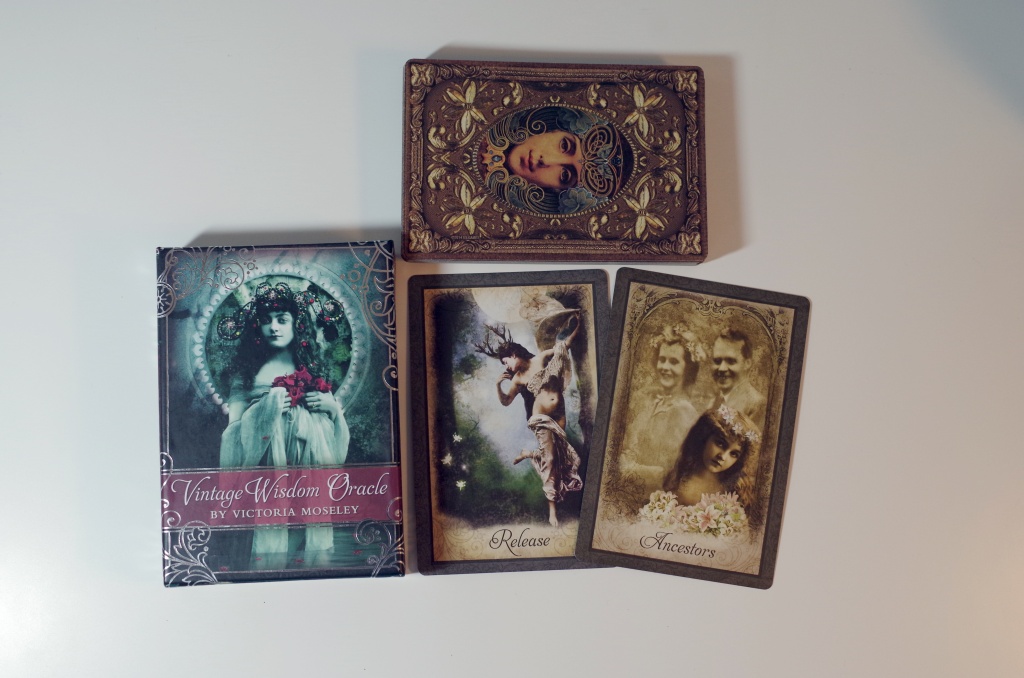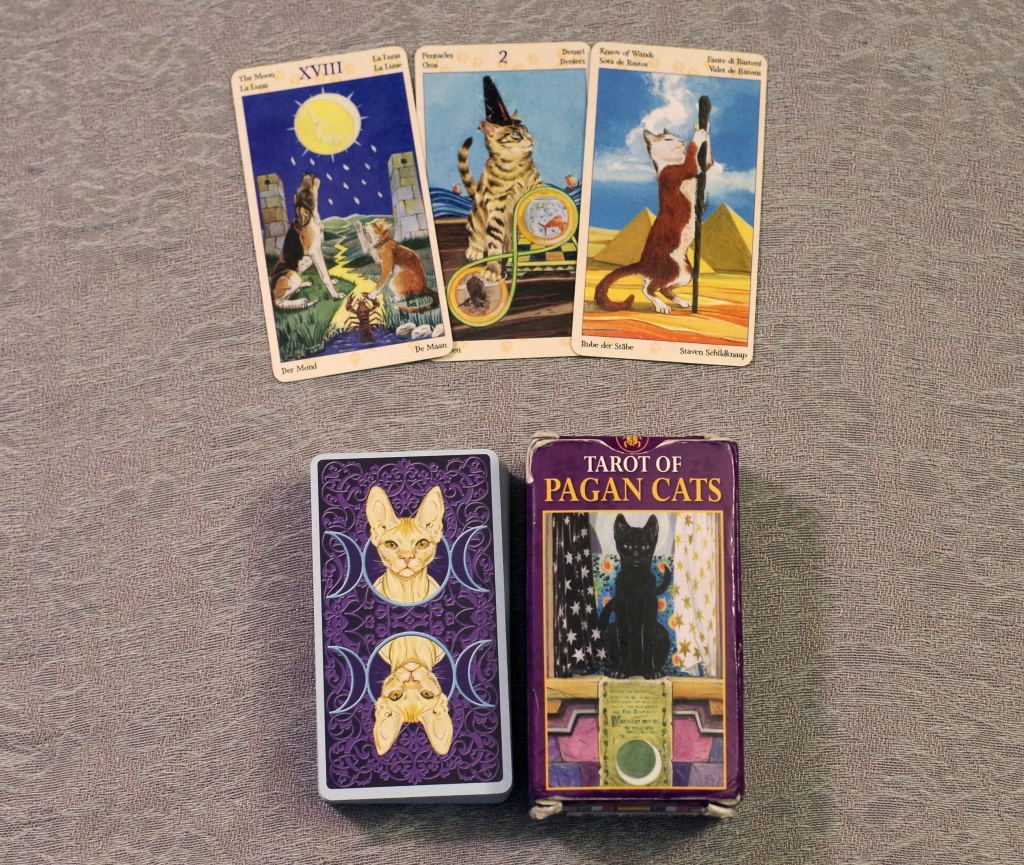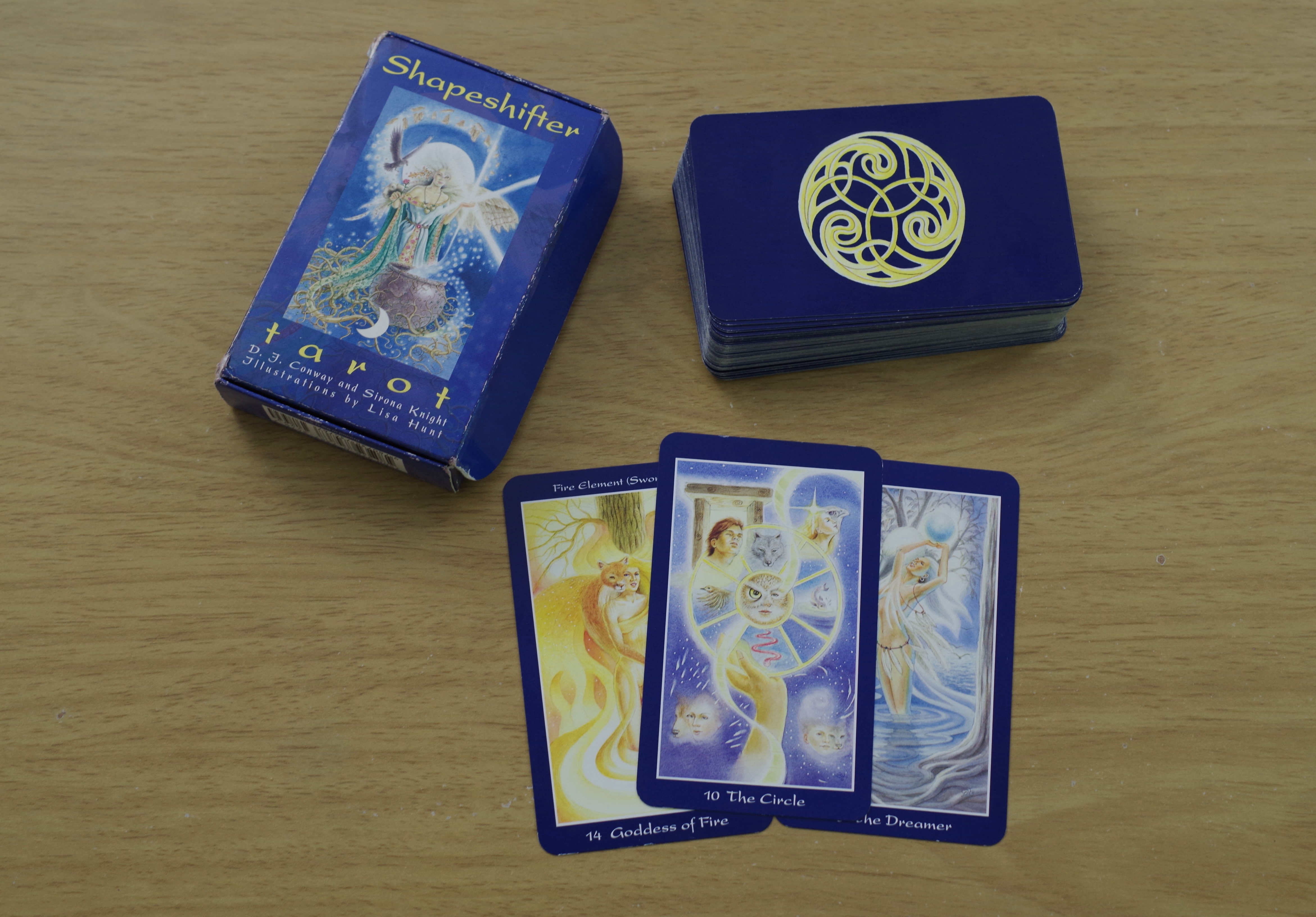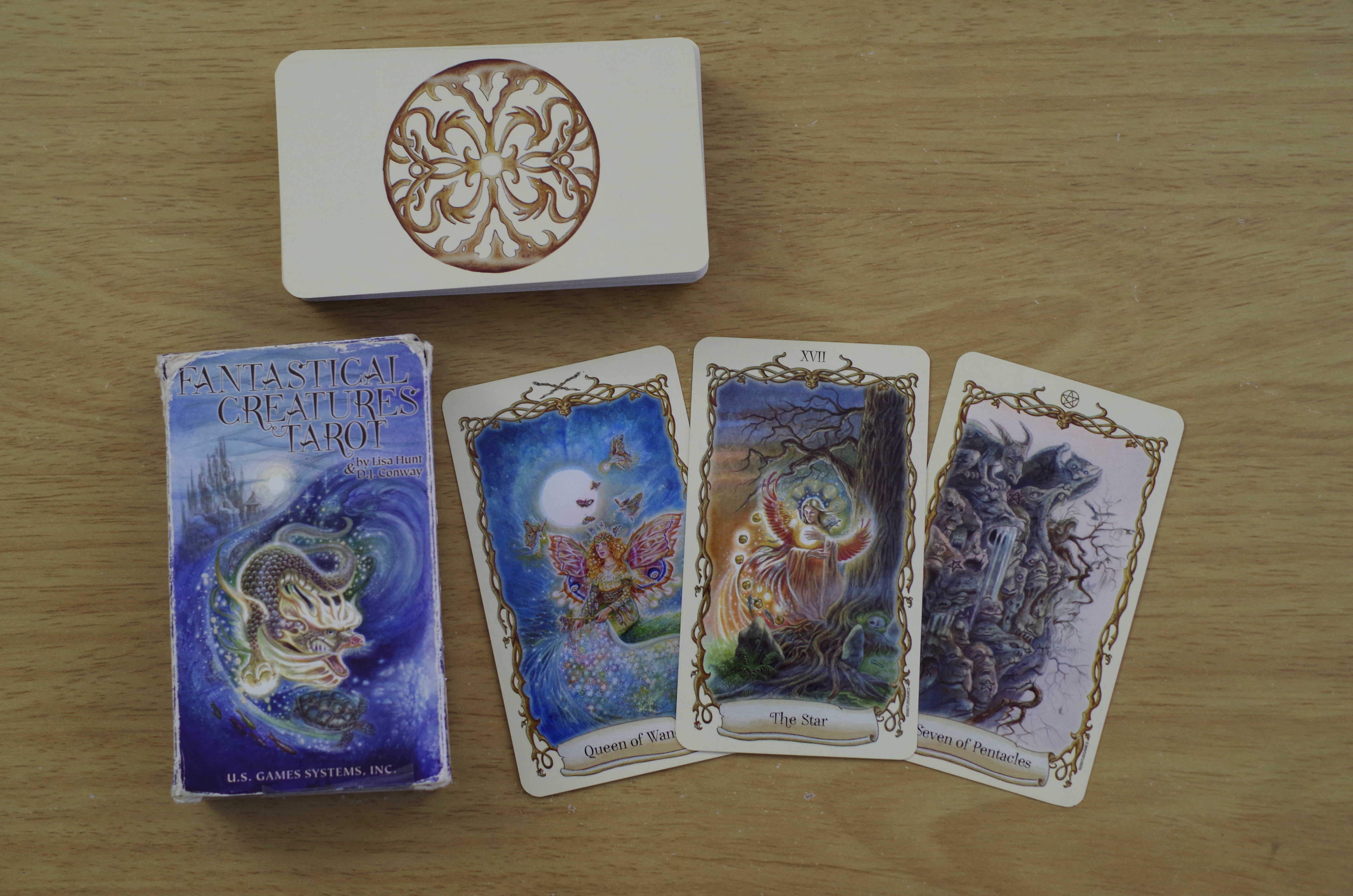Deck: The Everyday Tarot
Publisher: Running Press
Writer: Brigit Esselmont of Biddy Tarot
Artist: Eleanor Grosch
Overall Rating: 7/10

Cardstock: The cards are smaller than normal tarot cards, closer to poker card sized, and it can be a little awkward to shuffle all 78 of them. The cardstock is of good quality, though, not too slick and not too rough, and the printing is very vibrant. I find the borders not too distracting, and the gilded edges are a nice touch.
Artwork: The artwork is tricolor (white, gold, and purple) and combines flat white, luminous gold, and a watercolor textured purple. The images are done mainly with the human figures in silhouette, and a sort of minimalistic theme overall, but they’re recognizable to those familiar with the Rider-Waite-Smith system, and have enough intricacies to be beautiful, rather than boring.
Book: The booklet is about the same size as the cards and 87 pages long. It has a short paragraph for each upright and reversed meaning for each card, which is a pretty good amount of information, but does not contain a list of keywords. Somewhat unusually, there isn’t any more information on the majors than there is on the pips.
Likes: It’s pretty straightforward, like a minimalist version of the RWS, and therefore an easy deck to read for anyone used to that system. I really do like the artwork, though I wasn’t sure about it at first. It grew on me.
Dislikes: I was somewhat surprised that the deck didn’t contain the two lists of keywords that are listed on the Biddy Tarot website! And the cards are somewhat awkward to shuffle, as I mentioned above. I also don’t really like the box. It’s a magnetic clasp wrap like the cover of a book, with no top or bottom, but there’s a clear plastic case for the cards that’s rather flimsy, and to get the booklet to stay in, it has to be inserted in a slot in the cover. I’ll be moving this one to a knit bag, probably.
Overall Recommendation
I think in a different carrying case this would make a very good travel deck. I think it would make a good first deck for new readers, if combined with the resources on the Biddy Tarot website. It occupies a niche in my collection somewhere around “neutral-pretty”, and may make a good in-person reading deck, though because of the pandemic I really haven’t been doing that lately. I’m glad I own it, but this is not one of the ones I’d buy again immediately if I misplaced it.









